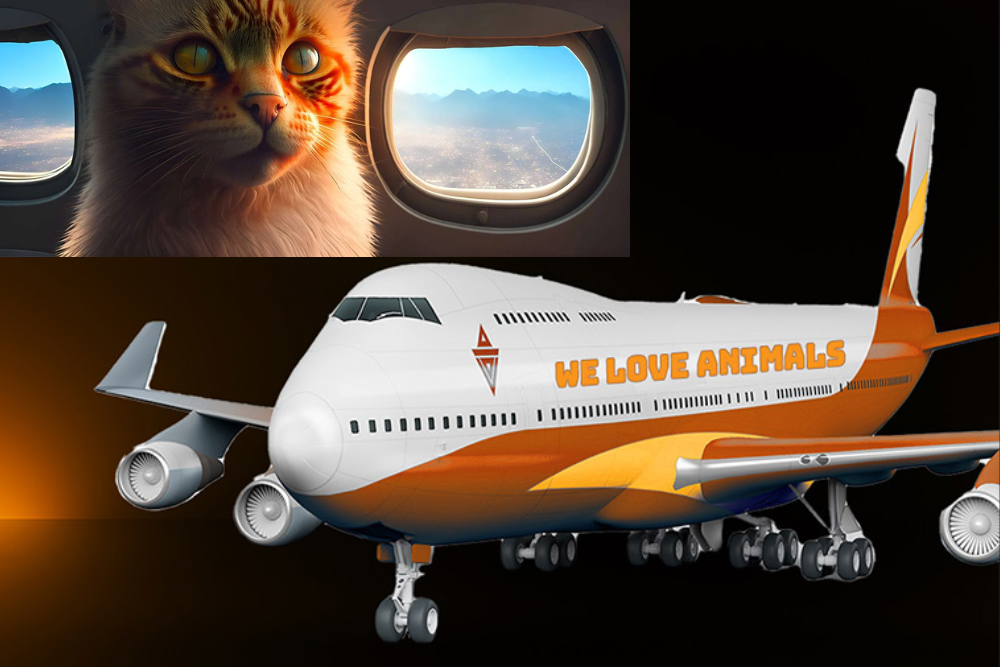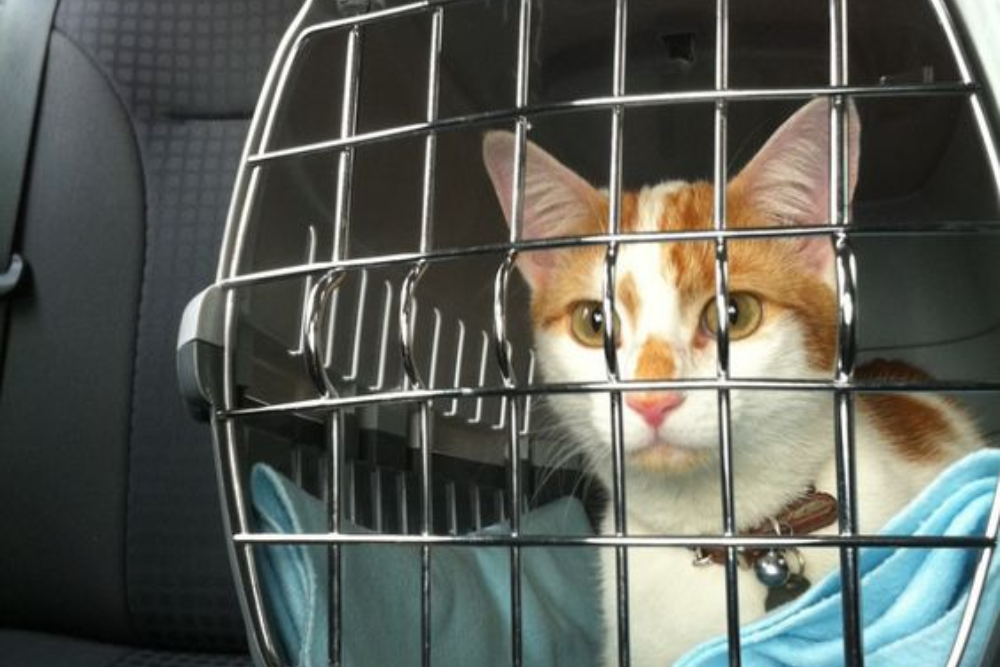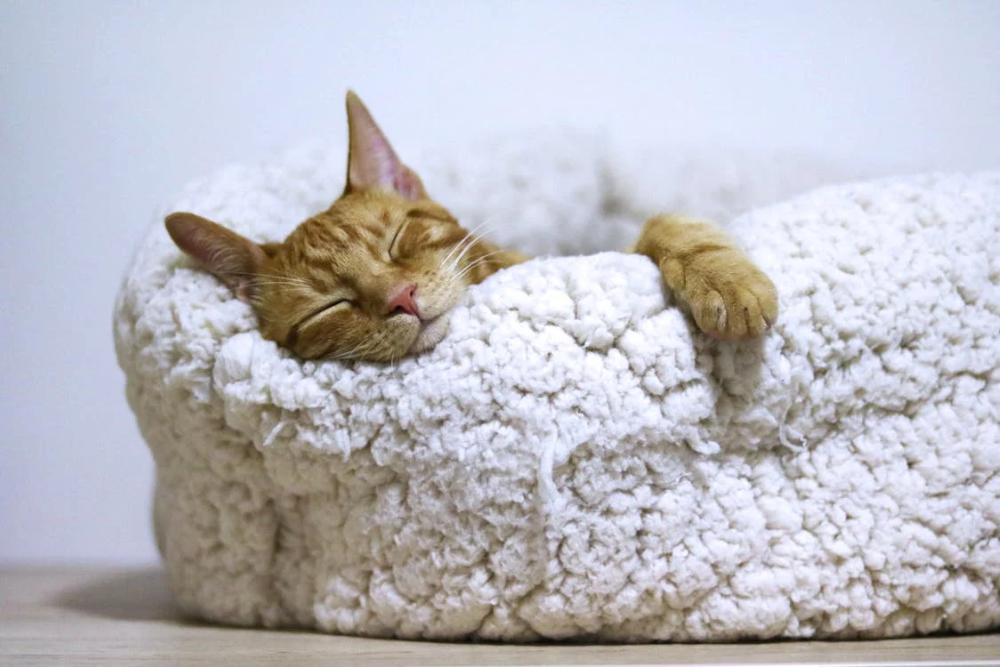When it’s time to go on a big adventure, like visiting family far away or exploring other countries, it’s hard to think about leaving your favorite furry friend behind. Our pets are like family, and wouldn’t it be great if they could join us on every journey? If you’re thinking about hopping on a plane with your beloved cat, you need a good plan. That’s where our guide to “cats on airplanes” comes in handy.
While you can usually take your cat with you on a flight, it’s important to follow the airline rules and make sure your kitty feels super cozy. And if you’re jetting off to another country, there are special rules you should know about. We chatted with vets to get their top tips, so consider this your go-to guide for flying with your cat safely.
Is It Safe for Cats to Fly on Airplanes?
In general, flying with cats is considered safe. However, there are crucial factors to consider before booking a flight, particularly if your cat has specific medical conditions. It’s advisable to consult with your veterinarian a few weeks before your planned journey to ensure your cat is fit for travel.
Breed-Specific Considerations
Certain cat breeds, particularly brachycephalic breeds like Burmese, Persian, Himalayan, and Exotic Shorthair, are often categorized as “no-fly” breeds by airlines. This classification is due to their short-headed structure, which makes them more prone to respiratory problems. The stress and anxiety associated with air travel can exacerbate these issues, making it essential to check the airline’s policy regarding your cat’s breed before making travel arrangements.
Cabin vs. Cargo Hold
Dr. Marc Bordelon, a veterinarian with Dutch telemedicine for pets, recommends that cats travel in the cabin rather than the cargo hold. While cargo areas are pressurized, temperature variations can occur, potentially affecting your cat’s well-being. Additionally, the process of checking in hours before the flight, along with the transfer from the staging area to the plane, can be stressful for your feline companion. Opting for cabin travel allows you to keep your cat close, monitor them easily, and provide comfort right at your feet.
Ear Pressure Concerns while Cats on Airplanes
Pressure changes at altitude can impact cats’ ears similarly to how our ears might pop. To alleviate any discomfort, offering your cat a treat during takeoff and landing may help. While there’s limited research on releasing ear pressure in cats, this simple measure can contribute to your cat’s comfort during the flight.
In conclusion, with proper precautions and consideration of your cat’s specific needs, flying with your cat can be a safe and manageable experience. Always consult with your vet, check airline policies, and prioritize your cat’s well-being throughout the journey. Opting for cabin travel provides a more controlled environment and allows you to be directly involved in ensuring your cat’s comfort during the flight.
How to Fly With Your Cat Internationally
Flying internationally with your cat requires careful planning and adherence to specific regulations. This guide aims to provide a step-by-step approach to ensure a smooth and stress-free journey for both you and your feline companion.
Research International Pet Travel Regulations
Before embarking on an international journey, thoroughly research the pet travel regulations of the destination country. Different countries have varying rules regarding pet entry, quarantine, and required vaccinations. Familiarize yourself with these regulations to avoid any complications during your travels.
Check Airline Policies and Requirements
Each airline has its own set of policies and requirements for flying with pets internationally. Contact your chosen airline well in advance to understand their regulations, pet fees, and any specific documentation they may require. Some airlines may have restrictions on certain breeds or routes, so it’s crucial to clarify these details.
Prepare Necessary Documentation
International travel with pets often involves extensive documentation. Ensure you have your cat’s health certificate, proof of vaccinations, and any additional paperwork required by the destination country. Plan ahead to meet all documentation deadlines and avoid any last-minute complications.
Select an Airline and Flight Carefully
When choosing an airline for international travel, consider factors such as their reputation for pet care, available in-cabin or cargo options, and the overall travel experience they provide. Opt for a direct flight when possible to minimize travel time for your cat.
Choose an Approved Travel Carrier
Selecting an airline-approved travel carrier is crucial for your cat’s safety and comfort. The carrier should meet international standards, providing adequate ventilation and security. Familiarize your cat with the carrier well before the journey to reduce stress.
Familiarize Your Cat with the Carrier
Help your cat acclimate to the travel carrier by placing familiar items inside and allowing them to explore it gradually. This familiarity will make the carrier a more comfortable and secure space for your cat during the journey.
Plan for Layovers and Transit
If your journey involves layovers or transit, plan accordingly. Confirm that each connecting airport follows pet-friendly practices and has suitable facilities for your cat’s needs. Ensure you have enough time between flights for bathroom breaks and feeding.
Consider Quarantine Regulations
Some countries may have quarantine requirements for incoming pets. Research and understand these regulations well in advance to avoid any surprises upon arrival. Fulfill all necessary quarantine procedures as per the destination country’s guidelines.
Monitor Your Cat’s Health and Well-being: Cats on Airplanes
During the flight, keep an eye on your cat’s well-being. Ensure they remain hydrated, comfortable, and stress-free. If you notice any signs of distress or discomfort, inform the flight attendants and seek assistance.
How Much Does It Cost to Cats on Airplanes?
Being a devoted cat parent is a long-term commitment filled with love, care, and, of course, financial responsibilities. Traveling with your feline friend on a plane comes with its own set of costs, as airlines typically charge fees for pet accommodations. Additionally, since your cat is considered your carry-on, you might incur additional expenses for checked baggage. Let’s delve into the specifics of the costs associated with flying with your cat and explore the fees charged by five top airlines.
Understanding the Costs of Cats on Airplanes
Flying with a cat involves more than just securing a spot for them on the plane. It’s essential to be aware of the financial aspects to ensure a smooth and hassle-free journey. Here’s a breakdown of the costs associated with flying with your cat:
- Airline Pet Fees: Airlines commonly charge a fee for accommodating pets on flights. This fee covers the additional services and facilities provided to ensure the comfort and safety of your cat during travel.
- Checked Baggage Fees: Since your cat is considered your carry-on, you may need to pay for a checked bag if you have additional luggage. The cost of checked baggage varies between airlines.
Cost Breakdown by Top Airlines
To give you a clearer picture, let’s explore the specific charges imposed by five top airlines for flying with your cat. Please note that these fees are subject to change, so it’s crucial to double-check with the respective airline before making any bookings.
- Alaskan Airlines: Fee: $100 per flight
- American Airlines: Fee: $125 per flight
- Delta Airlines: Fee: $125 per flight
- JetBlue: Fee: $125 per flight
- United: Fee: $125 per flight
Tips to Minimize Costs
While flying with your cat incurs additional expenses, there are ways to minimize costs and ensure a budget-friendly journey:
- Book in Advance: Airlines often offer lower pet fees for passengers who book well in advance. Plan your trip early to take advantage of potential discounts.
- Travel During Off-Peak Times: Consider traveling during off-peak seasons or mid-week, as some airlines may offer lower fees during these times.
- Choose Budget-Friendly Airlines: Compare pet fees across different airlines, and opt for those that provide reasonable rates without compromising on pet care services.
Being prepared for the costs associated with flying with your cat is a crucial part of responsible pet ownership. While the fees may vary between airlines, the love and companionship your cat provides are undoubtedly priceless. Plan ahead, be informed about airline policies, and make your journey a comfortable and enjoyable experience for both you and your feline companion.
Tips for Stress-Free Travel with Your Feline Companions
Traveling with your cat can be a rewarding experience with proper planning and consideration. To ensure a stress-free journey for both you and your feline friend, follow these detailed tips:
Acclimating Your Cat to Travel
- Gradual Introduction: Introduce your cat to their travel carrier gradually. Place it in a familiar space, allowing them to explore it at their own pace.
- Positive Association: Associate the carrier with positive experiences. Place treats, toys, or a soft blanket inside to create a comfortable environment.
Essential Travel Accessories
- Travel Kit: Pack a travel kit for your cat, including sufficient food, water, and any necessary medications. Familiar items like a favorite blanket or toy can provide comfort during the journey.
- Secure the Carrier: Ensure the carrier is well-ventilated and secure. A sturdy, well-designed carrier is essential for your cat’s safety and comfort.
Choose Pet-Friendly Airlines
- Research Airlines: Explore and choose airlines with pet-friendly policies. Consider factors like in-cabin options, cargo facilities, and overall customer reviews regarding pet travel.
- Book Direct Flights: Opt for direct flights whenever possible to minimize travel time and reduce stress for your cat.
Steps to Take When You Arrive with Your Cat
Arriving at your destination with your feline companion marks the end of your journey, but it’s crucial to take specific steps to ensure a smooth transition for your cat. Here’s a detailed guide on what to do when you arrive:
Take a Comfort Break
- Assess Your Cat’s Needs: Depending on your cat’s nature, evaluate if they need a break from the carrier after landing. This is especially important if you have additional travel, such as a car ride, to reach your final destination.
- Find a Quiet Area: Locate a quiet area where your cat can stretch their legs and explore if they’re inclined. An empty corner or a secluded spot can provide a sense of security.
- Consider Bathroom Break: Cats can be particular about using unfamiliar places for bathroom breaks. If your cat didn’t relieve themselves during the flight, you might try using the airport bathroom. Be patient, as some cats may wait until reaching the final destination.
Acclimate to New Surroundings
- Choose a Pet-Friendly Space: If staying at a hotel or a friend’s place, choose an area that is pet-friendly and free from potential hazards. Set up your cat’s essentials, such as their litter tray and food station, as a priority.
- Unpack Quickly: Unpack your cat’s belongings as soon as possible to provide a familiar environment. Having their familiar items around will help them regain a sense of normalcy.
- Introduce Them to the Space: Allow your cat to explore the new surroundings at their own pace. Some cats may be curious and start exploring immediately, while others might choose to hide initially. Be patient and let them acclimate naturally.
- Establish a Routine: Cats thrive on routines, so try to maintain familiar feeding times and interactions. This consistency will help your cat feel secure and comfortable in the new environment.
- Respect Their Space: Understand that your cat might need time to adjust. If they choose to hide or seem a bit aloof, give them space and avoid forcing interactions. Let them come to you when they feel ready.
Arriving at your destination is a significant milestone, and taking these steps will help ensure your cat’s comfort and well-being after the journey. By being attentive to your cat’s needs and creating a pet-friendly space, you’ll pave the way for a positive and stress-free experience for both you and your feline companion. Enjoy your time together in your new surroundings!


